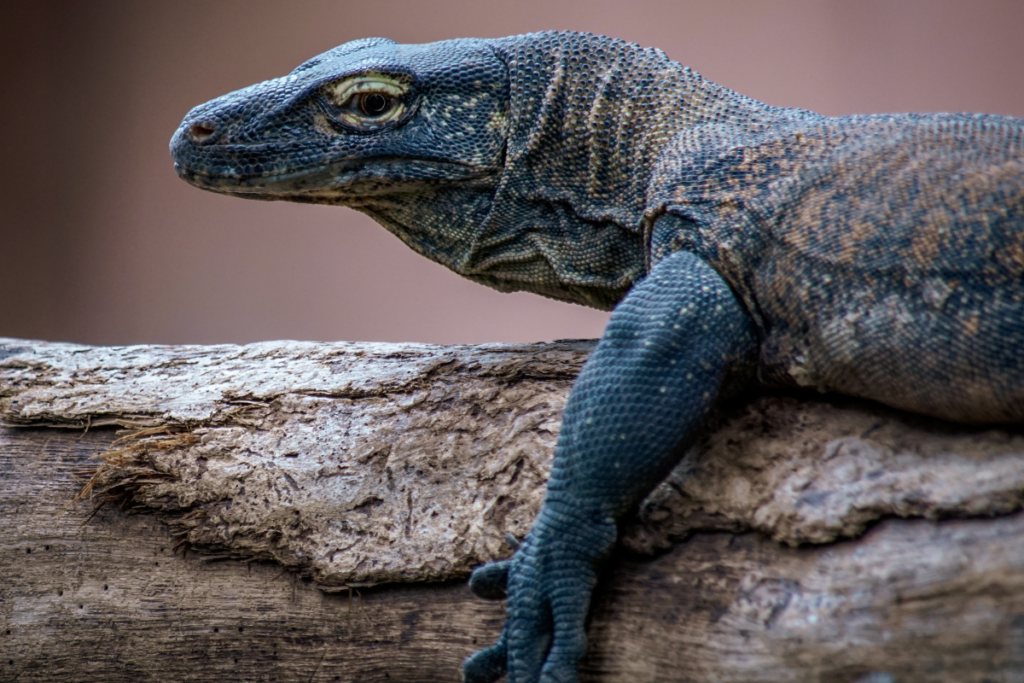The Indonesian archipelago is home to one of the world’s most formidable predators, the Komodo dragon (Varanus komodoensis).
Renowned for its size, strength, and predatory prowess, this ancient reptile has captured the imaginations of scientists and adventurers alike.
Found primarily on the islands of Komodo, Rinca, Flores, and a few smaller islands in southeastern Indonesia, the Komodo dragon stands as a symbol of raw, untamed wilderness.
Introduction to the Komodo Dragon

The Komodo dragon is the largest lizard species on Earth, with adult males often reaching lengths of up to three meters (ten feet) and weighing over 70 kilograms (150 pounds).
Despite its formidable size, the Komodo dragon is more than just a giant lizard—it is an apex predator, sitting at the top of its island food chain.
This article explores the life, behavior, and hunting techniques of this fascinating creature, shedding light on its evolutionary adaptations and ecological significance.
Habitat and Distribution

Komodo dragons inhabit a range of habitats within their island homes, including dry savannahs, tropical forests, and coastal areas.
They are endemic to a few specific islands in Indonesia, notably Komodo, Rinca, Flores, and the smaller Gili Motang and Gili Dasami islands.
Each of these islands offers a unique environment that has shaped the evolution of the Komodo dragon over millions of years.
Physical Characteristics

Size and Appearance
Adult Komodo dragons are characterized by their impressive size and robust build.
They possess powerful limbs and a muscular tail, which they use for both mobility and balance during hunting and combat.
The largest individuals can weigh up to 70 kilograms and measure over three meters in length, making them the heaviest lizards on the planet.
Skin and Coloration
The skin of the Komodo dragon is covered in armored scales, providing protection against bites and scratches during confrontations with prey or other dragons.
Their coloration ranges from earthy browns to grayish-green, allowing them to blend effectively into their natural surroundings.
This camouflage is crucial for ambushing prey and avoiding detection by potential predators.
Teeth and Venom
Komodo dragons have sharp, serrated teeth designed to tear flesh and inflict deep wounds on their prey.
What sets them apart from other large predators is their venomous bite.
Recent studies have revealed that Komodo dragons possess venom glands in their lower jaws, which secrete toxins that cause rapid blood loss and shock in prey animals.
This venom is not only lethal but also aids in subduing large prey, such as deer and wild boar, allowing the dragon to consume its meal at leisure.
Behavior and Hunting Techniques
Feeding Habits
Komodo dragons are opportunistic feeders, consuming a wide variety of prey depending on availability.
Their diet includes mammals, birds, and occasionally smaller reptiles.
Despite their size, Komodo dragons are skilled scavengers and often feed on carrion, using their acute sense of smell to detect the scent of decaying flesh from several kilometers away.
Hunting Strategies
When actively hunting, Komodo dragons rely on stealth and patience to ambush their prey.
They will lie in wait near watering holes or game trails, remaining motionless for hours until an unsuspecting animal comes within striking distance.
Once prey is within range, the dragon will launch a sudden attack, using its powerful jaws and sharp teeth to deliver a disabling bite.
The venom injected into the wound quickly immobilizes the prey, allowing the dragon to deliver a fatal blow before beginning the feeding process.
Reproduction and Life Cycle
Komodo dragons reach sexual maturity around five to seven years of age, although they continue to grow throughout their lives.
Breeding usually occurs during the dry season, with females laying a clutch of eggs in burrows dug into the soil.
After an incubation period of several months, the hatchlings emerge, facing immediate threats from predators and competing with siblings for resources.
Only a small percentage of hatchlings survive to adulthood, with those that do face an average lifespan of 30 to 50 years in the wild.
Conservation Status and Threats
Despite their fearsome reputation, Komodo dragons face significant threats to their survival in the wild.
Habitat loss due to human development, poaching for their skin and body parts, and climate change all pose serious challenges to the long-term viability of Komodo dragon populations.
Conservation efforts are underway to protect their remaining habitats and promote sustainable tourism practices that minimize human impact on these fragile ecosystems.
Conclusion
In conclusion, the Komodo dragon remains a symbol of resilience and adaptability in the face of environmental challenges.
As apex predators, they play a crucial role in regulating prey populations and maintaining the balance of their island ecosystems.
By studying and understanding the life and hunting strategies of the Komodo dragon, we gain valuable insights into the complexities of predator-prey dynamics and the delicate interplay between species and their environments.
Protecting these magnificent creatures is not only essential for their survival but also for the preservation of biodiversity in the Indonesian islands they call home.

